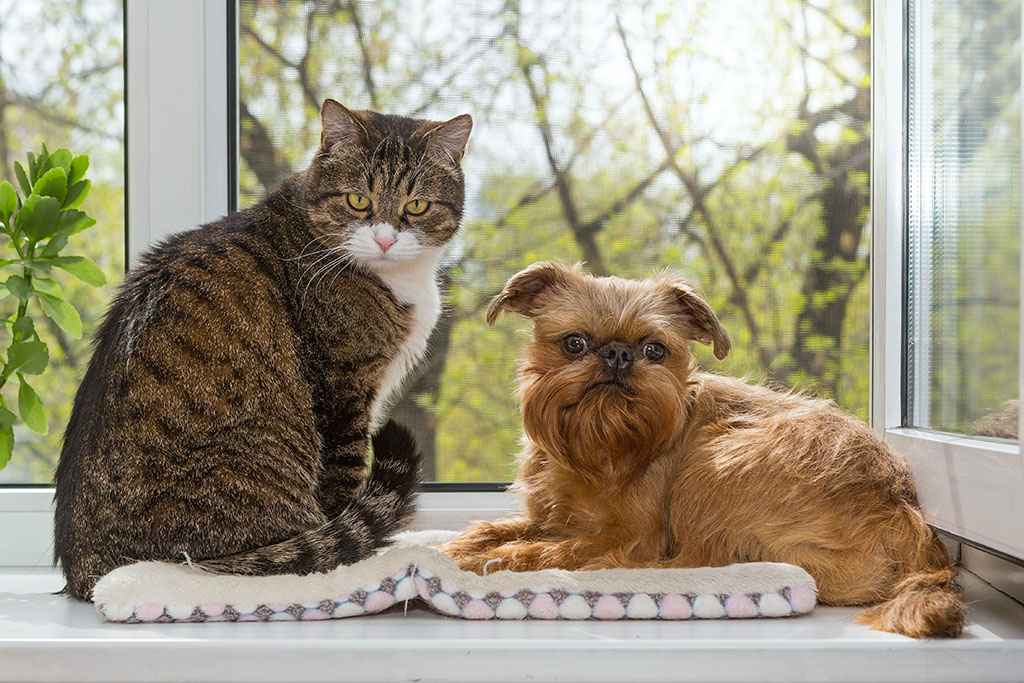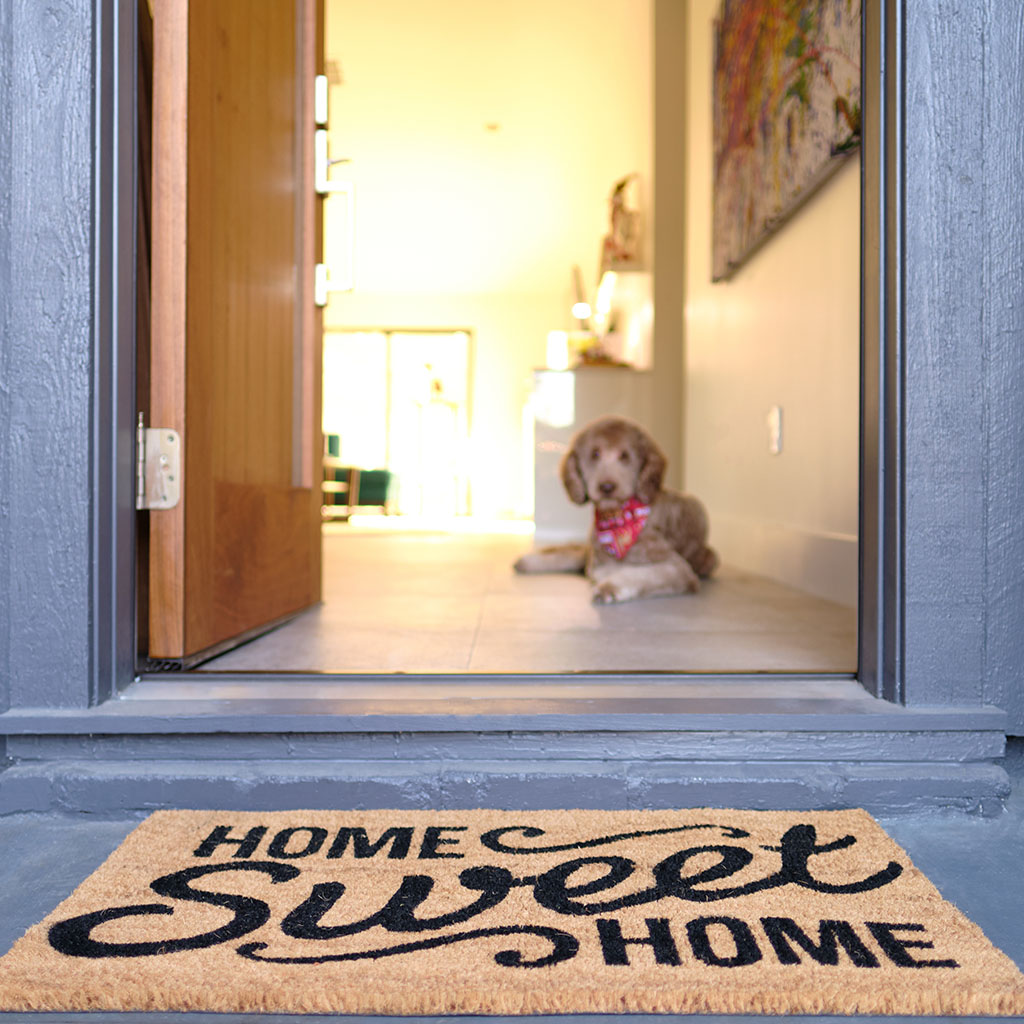
We are a nation of animal lovers; current statistics show that 52% of adults in the UK own a pet, and our pets are part of the family – where we go, they go. But this can often be tricky when it comes to finding somewhere to rent. At the moment, only 7% of private landlords advertise pet-friendly properties and sadly this has often led to people having to give up their pets.
Here at The Insurance Emporium we know how important our pets are, so we’ve put together some tips to help you find a rental home that’s suitable for both you and your furry friend.
Renting with Pets and The Law
The Model Tenancy Agreement, introduced in January 2021, makes it easier for pet-owning tenants to secure a lease; prior to this many landlords simply increased their security deposit. The Tenant Fees Act 2019 means that landlords can no longer ask for a higher security deposit from tenants with a pet; deposit capping means that deposits are now limited to five or six weeks rent.
The Agreement means that consent for pets is the default position and landlords can only say no if they have a ‘good reason’, for example, if it’s a smaller property and it wouldn’t be practical to have a large dog. Tenants still have a legal duty to pay for, or repair, any damage to the property, but the revised rule should find a balance between helping people with pets find a home that’s right for them, and making sure that landlords are ‘safeguarded against inappropriate or badly behaved pets.’

Finding the Right Place to Rent
One of the most important things to remember is research is key, but there are also a few other things you can do to make the process easier:
- Don’t leave it too late – start looking as soon as possible so you have time to consider your options
- Manage your expectations – you might have to compromise on certain things, for example, you might have to decide which is more important to you, more outside space or more space inside
- Get the letting agent on your side – tell them a bit about your pet and let them know you’re a responsible owner
- Be upfront – don’t just casually mention you have a pet just as you’re about to sign the agreement
- Hone your search – sites such a Zoopla have an option to filter your search so that you just see properties where pets are allowed
Preparing the Paperwork
The letting agent/landlord will carry out background checks anyway, but it might be useful to have a reference from previous landlords ready, to show that not only do you pay rent and associated bills on time, but that you are a responsible pet owner, and your pet is well-behaved and did not cause any damage.
You could also provide:
- Up-to-date vaccination records
- Microchip & licence numbers (learn more about microchipping here)
- Spay/neuter certificates
- A pet CV with the above information as well as details of things such as breed, temperament, training, flea treatments and maybe even a reference from your vet

What to Say to Your Landlord
It’s important to remember that the Model Tenant Agreement is only a recommendation, and tenants still have a legal duty to ‘repair or cover the cost of any damage to the property.’ With this in mind, it’s a good idea to be honest with your landlord from the start. Often landlords are more likely to be open to having a tenant with a pet than letting agents are, and they’re more likely to be flexible if you reassure them early on that your pet is unlikely to cause a problem.
Find out if your landlord has any specific concerns; are they worried about damage to the property? Excessive barking? Do they have animal welfare concerns? You can reassure them and let them know what you intend to do, for example, your landlord could be worried about your cat scratching their furniture, so you can let them know that you’ll prevent this from happening by buying a scratching post, or furniture covers.
Let your landlord know what your daily routine will look like, for example, are there going to be times when your pet will be left unattended for a number of hours?
In research carried out by Battersea Dogs and Cats Home, they found that landlords were 40% more likely to agree to having pet-owning tenants if the tenant had insurance against pet damage (remember to check your policy wording to see if this is included and if there are any exclusions such as damage caused by your pet being left alone), or if they offer to deep-clean the property at the end of their lease.
Basically, the more information the landlord has, the more likely they are to accept a tenant with a pet.

Useful Resources
There’s a lot of information online; Lets with Pets has advice for landlords, letting agents and tenants, as does Cats Protection. You can also read our advice about living with a cat in an apartment. You can also read more about your legal rights here.
Remember, landlords have valid reasons for being reluctant to accept tenants with pets; they don’t know what kind of pet parent you are, so will worry about damage, noise, smells and pest infestations, as well as possible complaints from neighbours. They also might have concerns about whether or not the size of the property is suitable for your pet. It’s your job to reassure them that your furry friend is both house-trained and pleasant to have around, something that can’t always be guaranteed with human house guests!
This blog is in no way sponsored, endorsed, associated with or administered by Zoopla, Lets with Pets, Battersea or Cats Protection.
All content provided on this blog is for informational purposes only. We make no representations as to the accuracy or completeness of any information on this site or found by following any link on this site. We will not be liable for any errors or omissions in this information nor for the availability of this information. We will not be liable for any loss, injury, or damage arising from the display or use of this information. This policy is subject to change at any time.
We offer a variety of cover levels, so please check the policy cover suits your needs before purchasing. For your protection, please ensure you read the Insurance Product Information Document (IPID) and policy wording, for information on policy exclusions and limitations.


